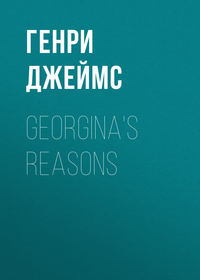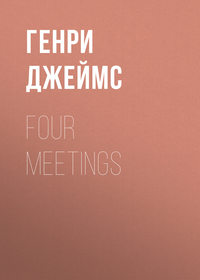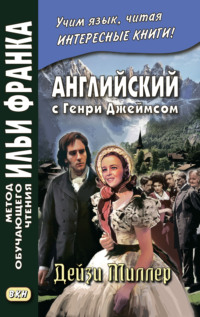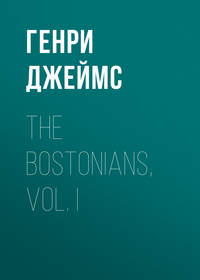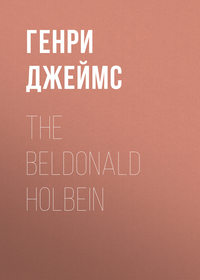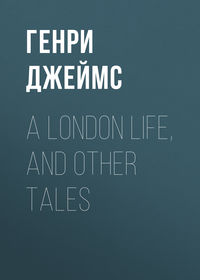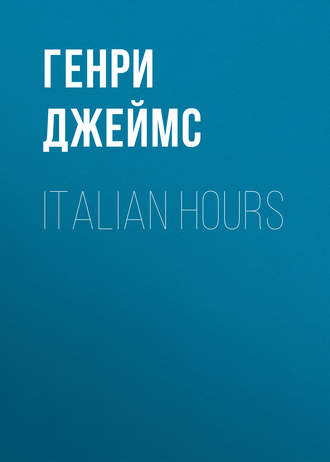 полная версия
полная версияItalian Hours
My actual tribute to him, however, has diverted me from what I had in mind—a much weightier matter—the great private palaces which are the massive majestic syllables, sentences, periods, of the strange message the place addresses to us. They are extraordinarily spacious and numerous, and one wonders what part they can play in the meagre economy of the actual city. The Siena of to-day is a mere shrunken semblance of the rabid little republic which in the thirteenth century waged triumphant war with Florence, cultivated the arts with splendour, planned a cathedral (though it had ultimately to curtail the design) of proportions almost unequalled, and contained a population of two hundred thousand souls. Many of these dusky piles still bear the names of the old mediaeval magnates the vague mild occupancy of whose descendants has the effect of armour of proof worn over “pot” hats and tweed jackets and trousers. Half-a-dozen of them are as high as the Strozzi and Riccardi palaces in Florence; they couldn’t well be higher. The very essence of the romantic and the scenic is in the way these colossal dwellings are packed together in their steep streets, in the depths of their little enclosed, agglomerated city. When we, in our day and country, raise a structure of half the mass and dignity, we leave a great space about it in the manner of a pause after a showy speech. But when a Sienese countess, as things are here, is doing her hair near the window, she is a wonderfully near neighbour to the cavalier opposite, who is being shaved by his valet. Possibly the countess doesn’t object to a certain chosen publicity at her toilet; what does an Italian gentleman assure me but that the aristocracy make very free with each other? Some of the palaces are shown, but only when the occupants are at home, and now they are in villeggiatura. Their villeggiatura lasts eight months of the year, the waiter at the inn informs me, and they spend little more than the carnival in the city. The gossip of an inn-waiter ought perhaps to be beneath the dignity of even such thin history as this; but I confess that when, as a story-seeker always and ever, I have come in from my strolls with an irritated sense of the dumbness of stones and mortar, it has been to listen with avidity, over my dinner, to the proffered confidences of the worthy man who stands by with a napkin. His talk is really very fine, and he prides himself greatly on his cultivated tone, to which he calls my attention. He has very little good to say about the Sienese nobility. They are “proprio d’origine egoista”—whatever that may be—and there are many who can’t write their names. This may be calumny; but I doubt whether the most blameless of them all could have spoken more delicately of a lady of peculiar personal appearance who had been dining near me. “She’s too fat,” I grossly said on her leaving the room. The waiter shook his head with a little sniff: “È troppo materiale.” This lady and her companion were the party whom, thinking I might relish a little company—I had been dining alone for a week—he gleefully announced to me as newly arrived Americans. They were Americans, I found, who wore, pinned to their heads in permanence, the black lace veil or mantilla, conveyed their beans to their mouth with a knife, and spoke a strange raucous Spanish. They were in fine compatriots from Montevideo.
The genius of old Siena, however, would make little of any stress of such distinctions; one representative of a far-off social platitude being about as much in order as another as he stands before the great loggia of the Casino di Nobili, the club of the best society. The nobility, which is very numerous and very rich, is still, says the apparently competent native I began by quoting, perfectly feudal and uplifted and separate. Morally and intellectually, behind the walls of its palaces, the fourteenth century, it’s thrilling to think, hasn’t ceased to hang on. There is no bourgeoisie to speak of; immediately after the aristocracy come the poor people, who are very poor indeed. My friend’s account of these matters made me wish more than ever, as a lover of the preserved social specimen, of type at almost any price, that one weren’t, a helpless victim of the historic sense, reduced simply to staring at black stones and peeping up stately staircases; and that when one had examined the street-face of the palace, Murray in hand, one might walk up to the great drawing-room, make one’s bow to the master and mistress, the old abbe and the young count, and invite them to favour one with a sketch of their social philosophy or a few first-hand family anecdotes.
The dusky labyrinth of the streets, we must in default of such initiations content ourselves with noting, is interrupted by two great candid spaces: the fan-shaped piazza, of which I just now said a word, and the smaller square in which the cathedral erects its walls of many-coloured marble. Of course since paying the great piazza my compliments by moonlight I have strolled through it often at sunnier and shadier hours. The market is held there, and wherever Italians buy and sell, wherever they count and chaffer—as indeed you hear them do right and left, at almost any moment, as you take your way among them—the pulse of life beats fast. It has been doing so on the spot just named, I suppose, for the last five hundred years, and during that time the cost of eggs and earthen pots has been gradually but inexorably increasing. The buyers nevertheless wrestle over their purchases as lustily as so many fourteenth-century burghers suddenly waking up in horror to current prices. You have but to walk aside, however, into the Palazzo Pubblico really to feel yourself a thrifty old medievalist. The state affairs of the Republic were formerly transacted here, but it now gives shelter to modern law-courts and other prosy business. I was marched through a number of vaulted halls and chambers, which, in the intervals of the administrative sessions held in them, are peopled only by the great mouldering archaic frescoes—anything but inanimate these even in their present ruin—that cover the walls and ceiling. The chief painters of the Sienese school lent a hand in producing the works I name, and you may complete there the connoisseurship in which, possibly, you will have embarked at the Academy. I say “possibly” to be very judicial, my own observation having led me no great length. I have rather than otherwise cherished the thought that the Sienese school suffers one’s eagerness peacefully to slumber—benignantly abstains in fact from whipping up a languid curiosity and a tepid faith. “A formidable rival to the Florentine,” says some book—I forget which—into which I recently glanced. Not a bit of it thereupon boldly say I; the Florentines may rest on their laurels and the lounger on his lounge. The early painters of the two groups have indeed much in common; but the Florentines had the good fortune to see their efforts gathered up and applied by a few pre-eminent spirits, such as never came to the rescue of the groping Sienese. Fra Angelico and Ghirlandaio said all their feebler confrères dreamt of and a great deal more beside, but the inspiration of Simone Memmi and Ambrogio Lorenzetti and Sano di Pietro has a painful air of never efflorescing into a maximum. Sodoma and Beccafumi are to my taste a rather abortive maximum. But one should speak of them all gently—and I do, from my soul; for their labour, by their lights, has wrought a precious heritage of still-living colour and rich figure-peopled shadow for the echoing chambers of their old civic fortress. The faded frescoes cover the walls like quaintly-storied tapestries; in one way or another they cast their spell. If one owes a large debt of pleasure to pictorial art one comes to think tenderly and easily of its whole evolution, as of the conscious experience of a single mysterious, striving spirit, and one shrinks from saying rude things about any particular phase of it, just as one would from referring without precautions to some error or lapse in the life of a person one esteemed. You don’t care to remind a grizzled veteran of his defeats, and why should we linger in Siena to talk about Beccafumi? I by no means go so far as to say, with an amateur with whom I have just been discussing the matter, that “Sodoma is a precious poor painter and Beccafumi no painter at all”; but, opportunity being limited, I am willing to let the remark about Beccafumi pass for true. With regard to Sodoma, I remember seeing four years ago in the choir of the Cathedral of Pisa a certain small dusky specimen of the painter—an Abraham and Isaac, if I am not mistaken—which was charged with a gloomy grace. One rarely meets him in general collections, and I had never done so till the other day. He was not prolific, apparently; he had however his own elegance, and his rarity is a part of it.
Here in Siena are a couple of dozen scattered frescoes and three or four canvases; his masterpiece, among others, an harmonious Descent from the Cross. I wouldn’t give a fig for the equilibrium of the figures or the ladders; but while it lasts the scene is all intensely solemn and graceful and sweet—too sweet for so bitter a subject. Sodoma’s women are strangely sweet; an imaginative sense of morbid appealing attitude—as notably in the sentimental, the pathetic, but the none the less pleasant, “Swooning of St. Catherine,” the great Sienese heroine, at San Domenico—seems to me the author’s finest accomplishment. His frescoes have all the same almost appealing evasion of difficulty, and a kind of mild melancholy which I am inclined to think the sincerest part of them, for it strikes me as practically the artist’s depressed suspicion of his own want of force. Once he determined, however, that if he couldn’t be strong he would make capital of his weakness, and painted the Christ bound to the Column, of the Academy. Here he got much nearer and I have no doubt mixed his colours with his tears; but the result can’t be better described than by saying that it is, pictorially, the first of the modern Christs. Unfortunately it hasn’t been the last.
The main strength of Sienese art went possibly into the erection of the Cathedral, and yet even here the strength is not of the greatest strain. If, however, there are more interesting temples in Italy, there are few more richly and variously scenic and splendid, the comparative meagreness of the architectural idea being overlaid by a marvellous wealth of ingenious detail. Opposite the church—with the dull old archbishop’s palace on one side and a dismantled residence of the late Grand Duke of Tuscany on the other—is an ancient hospital with a big stone bench running all along its front. Here I have sat a while every morning for a week, like a philosophic convalescent, watching the florid façade of the cathedral glitter against the deep blue sky. It has been lavishly restored of late years, and the fresh white marble of the densely clustered pinnacles and statues and beasts and flowers flashes in the sunshine like a mosaic of jewels. There is more of this goldsmith’s work in stone than I can remember or describe; it is piled up over three great doors with immense margins of exquisite decorative sculpture—still in the ancient cream-coloured marble—and beneath three sharp pediments embossed with images relieved against red marble and tipped with golden mosaics. It is in the highest degree fantastic and luxuriant—it is on the whole very lovely. As a triumph of the many-hued it prepares you for the interior, where the same parti-coloured splendour is endlessly at play—a confident complication of harmonies and contrasts and of the minor structural refinements and braveries. The internal surface is mainly wrought in alternate courses of black and white marble; but as the latter has been dimmed by the centuries to a fine mild brown the place is all a concert of relieved and dispersed glooms. Save for Pinturicchio’s brilliant frescoes in the Sacristy there are no pictures to speak of; but the pavement is covered with many elaborate designs in black and white mosaic after cartoons by Beccafumi. The patient skill of these compositions makes them a rare piece of decoration; yet even here the friend whom I lately quoted rejects this over-ripe fruit of the Sienese school. The designs are nonsensical, he declares, and all his admiration is for the cunning artisans who have imitated the hatchings and shadings and hair-strokes of the pencil by the finest curves of inserted black stone. But the true romance of handiwork at Siena is to be seen in the wondrous stalls of the choir, under the coloured light of the great wheel-window. Wood-carving has ever been a cherished craft of the place, and the best masters of the art during the fifteenth century lavished themselves on this prodigious task. It is the frost-work on one’s window-panes interpreted in polished oak. It would be hard to find, doubtless, a more moving illustration of the peculiar patience, the sacred candour, of the great time. Into such artistry as this the author seems to put more of his personal substance than into any other; he has to wrestle not only with his subject, but with his material. He is richly fortunate when his subject is charming—when his devices, inventions and fantasies spring lightly to his hand; for in the material itself, after age and use have ripened and polished and darkened it to the richness of ebony and to a greater warmth there is something surpassingly delectable and venerable. Wander behind the altar at Siena when the chanting is over and the incense has faded, and look well at the stalls of the Barili.
1873III leave the impression noted in the foregoing pages to tell its own small story, but have it on my conscience to wonder, in this connection, quite candidly and publicly and by way of due penance, at the scantness of such first-fruits of my sensibility. I was to see Siena repeatedly in the years to follow, I was to know her better, and I would say that I was to do her an ampler justice didn’t that remark seem to reflect a little on my earlier poor judgment. This judgment strikes me to-day as having fallen short—true as it may be that I find ever a value, or at least an interest, even in the moods and humours and lapses of any brooding, musing or fantasticating observer to whom the finer sense of things is on the whole not closed. If he has on a given occasion nodded or stumbled or strayed, this fact by itself speaks to me of him—speaks to me, that is, of his faculty and his idiosyncrasies, and I care nothing for the application of his faculty unless it be, first of all, in itself interesting. Which may serve as my reply to any objection here breaking out—on the ground that if a spectator’s languors are evidence, of a sort, about that personage, they are scarce evident about the case before him, at least if the case be important. I let my perhaps rather weak expression of the sense of Siena stand, at any rate—for the sake of what I myself read into it; but I should like to amplify it by other memories, and would do so eagerly if I might here enjoy the space. The difficulty for these rectifications is that if the early vision has failed of competence or of full felicity, if initiation has thus been slow, so, with renewals and extensions, so, with the larger experience, one hindrance is exchanged for another. There is quite such a possibility as having lived into a relation too much to be able to make a statement of it.
I remember on one occasion arriving very late of a summer night, after an almost unbroken run from London, and the note of that approach—I was the only person alighting at the station below the great hill of the little fortress city, under whose at once frowning and gaping gate I must have passed, in the warm darkness and the absolute stillness, very much after the felt fashion of a person of importance about to be enormously incarcerated—gives me, for preservation thus belated, the pitch, as I may call it, at various times, though always at one season, of an almost systematised esthetic use of the place. It wasn’t to be denied that the immensely better “accommodations” instituted by the multiplying, though alas more bustling, years had to be recognised as supplying a basis, comparatively prosaic if one would, to that luxury. No sooner have I written which words, however, than I find myself adding that one “wouldn’t,” that one doesn’t—doesn’t, that is, consent now to regard the then “new” hotel (pretty old indeed by this time) as anything but an aid to a free play of perception. The strong and rank old Arme d’Inghilterra, in the darker street, has passed away; but its ancient rival the Aquila Nera put forth claims to modernisation, and the Grand Hotel, the still fresher flower of modernity near the gate by which you enter from the station, takes on to my present remembrance a mellowness as of all sorts of comfort, cleanliness and kindness. The particular facts, those of the visit I began here by alluding to and those of still others, at all events, inveterately made in June or early in July, enter together in a fusion as of hot golden-brown objects seen through the practicable crevices of shutters drawn upon high, cool, darkened rooms where the scheme of the scene involved longish days of quiet work, with late afternoon emergence and contemplation waiting on the better or the worse conscience. I thus associate the compact world of the admirable hill-top, the world of a predominant golden-brown, with a general invocation of sensibility and fancy, and think of myself as going forth into the lingering light of summer evenings all attuned to intensity of the idea of compositional beauty, or in other words, freely speaking, to the question of colour, to intensity of picture. To communicate with Siena in this charming way was thus, I admit, to have no great margin for the prosecution of inquiries, but I am not sure that it wasn’t, little by little, to feel the whole combination of elements better than by a more exemplary method, and this from beginning to end of the scale.
More of the elements indeed, for memory, hang about the days that were ushered in by that straight flight from the north than about any other series—if partly, doubtless, but because of my having then stayed longest. I specify it at all events for fond reminiscence as the year, the only year, at which I was present at the Palio, the earlier one, the series of furious horse-races between elected representatives of different quarters of the town taking place toward the end of June, as the second and still more characteristic exhibition of the same sort is appointed to the month of August; a spectacle that I am far from speaking of as the finest flower of my old and perhaps even a little faded cluster of impressions, but which smudges that special sojourn as with the big thumb—mark of a slightly soiled and decidedly ensanguined hand. For really, after all, the great loud gaudy romp or heated frolic, simulating ferocity if not achieving it, that is the annual pride of the town, was not intrinsically, to my-view, extraordinarily impressive—in spite of its bristling with all due testimony to the passionate Italian clutch of any pretext for costume and attitude and utterance, for mumming and masquerading and raucously representing; the vast cheap vividness rather somehow refines itself, and the swarm and hubbub of the immense square melt, to the uplifted sense of a very high-placed balcony of the overhanging Chigi palace, where everything was superseded but the intenser passage, across the ages, of the great Renaissance tradition of architecture and the infinite sweetness of the waning golden day. The Palio, indubitably, was criard—and the more so for quite monopolising, at Siena, the note of crudity; and much of it demanded doubtless of one’s patience a due respect for the long local continuity of such things; it drops into its humoured position, however, in any retrospective command of the many brave aspects of the prodigious place. Not that I am pretending here, even for rectification, to take these at all in turn; I only go on a little with my rueful glance at the marked gaps left in my original report of sympathies entertained.
I bow my head for instance to the mystery of my not having mentioned that the coolest and freshest flower of the day was ever that of one’s constant renewal of a charmed homage to Pinturicchio, coolest and freshest and signally youngest and most matutinal (as distinguished from merely primitive or crepuscular) of painters, in the library or sacristy of the Cathedral. Did I always find time before work to spend half-an-hour of immersion, under that splendid roof, in the clearest and tenderest, the very cleanest and “straightest,” as it masters our envious credulity, of all storied fresco-worlds? This wondrous apartment, a monument in itself to the ancient pride and power of the Church, and which contains an unsurpassed treasure of gloriously illuminated missals, psalters and other vast parchment folios, almost each of whose successive leaves gives the impression of rubies, sapphires and emeralds set in gold and practically embedded in the page, offers thus to view, after a fashion splendidly sustained, a pictorial record of the career of Pope Pius II, Aeneas Sylvius of the Siena Piccolomini (who gave him for an immediate successor a second of their name), most profanely literary of Pontiffs and last of would-be Crusaders, whose adventures and achievements under Pinturicchio’s brush smooth themselves out for us very much to the tune of the “stories” told by some fine old man of the world, at the restful end of his life, to the cluster of his grandchildren. The end of AEneas Sylvius was not restful; he died at Ancona in troublous times, preaching war, and attempting to make it, against the then terrific Turk; but over no great worldly personal legend, among those of men of arduous affairs, arches a fairer, lighter or more pacific memorial vault than the shining Libreria of Siena. I seem to remember having it and its unfrequented enclosing precinct so often all to myself that I must indeed mostly have resorted to it for a prompt benediction on the day. Like no other strong solicitation, among artistic appeals to which one may compare it up and down the whole wonderful country, is the felt neighbouring presence of the overwrought Cathedral in its little proud possessive town: you may so often feel by the week at a time that it stands there really for your own personal enjoyment, your romantic convenience, your small wanton aesthetic use. In such a light shines for me, at all events, under such an accumulation and complication of tone flushes and darkens and richly recedes for me, across the years, the treasure-house of many-coloured marbles in the untrodden, the drowsy, empty Sienese square. One could positively do, in the free exercise of any responsible fancy or luxurious taste, what one would with it.
But that proposition holds true, after all, for almost any mild pastime of the incurable student of loose meanings and stray relics and odd references and dim analogies in an Italian hill-city bronzed and seasoned by the ages. I ought perhaps, for justification of the right to talk, to have plunged into the Siena archives of which, on one occasion, a kindly custodian gave me, in rather dusty and stuffy conditions, as the incident vaguely comes back to me, a glimpse that was like a moment’s stand at the mouth of a deep, dark mine. I didn’t descend into the pit; I did, instead of this, a much idler and easier thing: I simply went every afternoon, my stint of work over, I like to recall, for a musing stroll upon the Lizza—the Lizza which had its own unpretentious but quite insidious art of meeting the lover of old stories halfway. The great and subtle thing, if you are not a strenuous specialist, in places of a heavily charged historic consciousness, is to profit by the sense of that consciousness—or in other words to cultivate a relation with the oracle—after the fashion that suits yourself; so that if the general after-taste of experience, experience at large, the fine distilled essence of the matter, seems to breathe, in such a case, from the very stones and to make a thick strong liquor of the very air, you may thus gather as you pass what is most to your purpose; which is more the indestructible mixture of lived things, with its concentrated lingering odour, than any interminable list of numbered chapters and verses. Chapters and verses, literally scanned, refuse coincidence, mostly, with the divisional proprieties of your own pile of manuscript—which is but another way of saying, in short, that if the Lizza is a mere fortified promontory of the great Sienese hill, serving at once as a stronghold for the present military garrison and as a planted and benched and band-standed walk and recreation-ground for the citizens, so I could never, toward close of day, either have enough of it or yet feel the vaguest saunterings there to be vain. They were vague with the qualification always of that finer massing, as one wandered off, of the bronzed and seasoned element, the huge rock pedestal, the bravery of walls and gates and towers and palaces and loudly asserted dominion; and then of that pervaded or mildly infested air in which one feels the experience of the ages, of which I just spoke, to be exquisitely in solution; and lastly of the wide, strange, sad, beautiful horizon, a rim of far mountains that always pictured, for the leaner on old rubbed and smoothed parapets at the sunset hour, a country not exactly blighted or deserted, but that had had its life, on an immense scale, and had gone, with all its memories and relics, into rather austere, in fact into almost grim and misanthropic, retirement. This was a manner and a mood, at any rate, in all the land, that favoured in the late afternoons the divinest landscape blues and purples—not to speak of its favouring still more my practical contention that the whole guarded headland in question, with the immense ramparts of golden brown and red that dropped into vineyards and orchards and cornfields and all the rustic elegance of the Tuscan podere, was knitting for me a chain of unforgettable hours; to the justice of which claim let these divagations testify.



